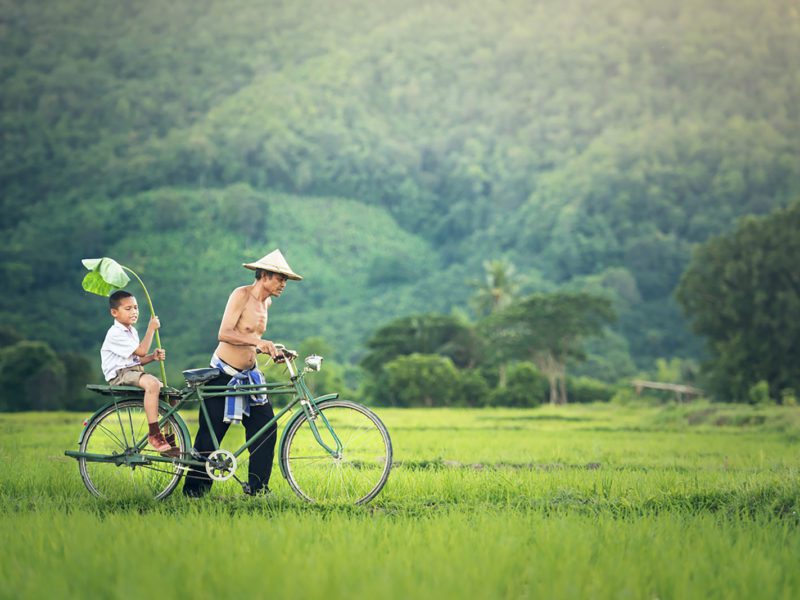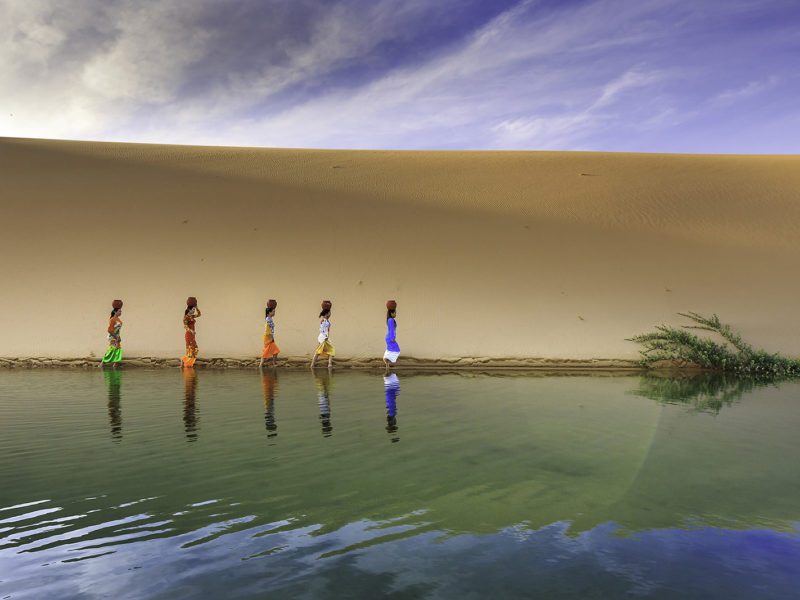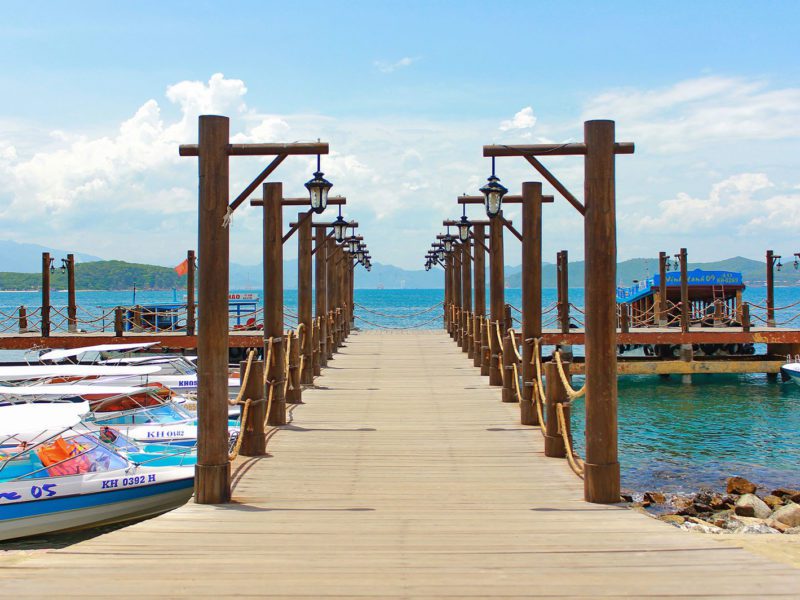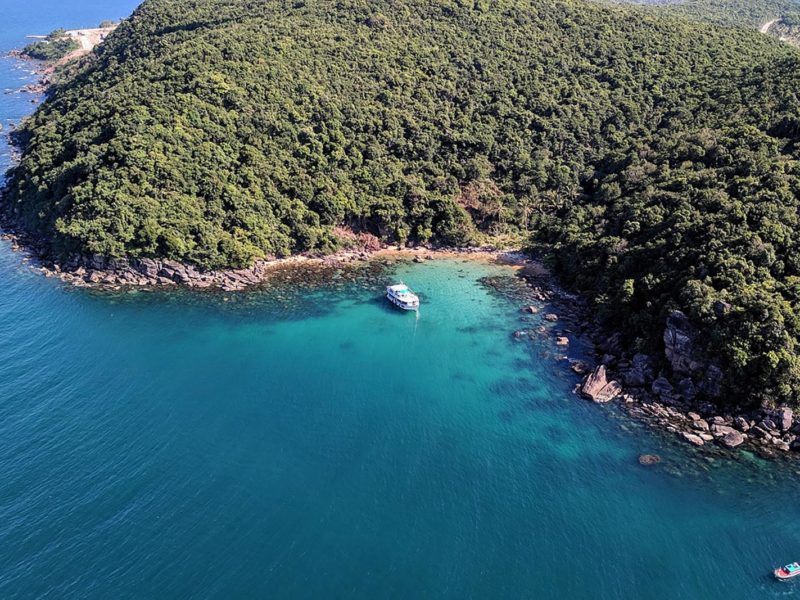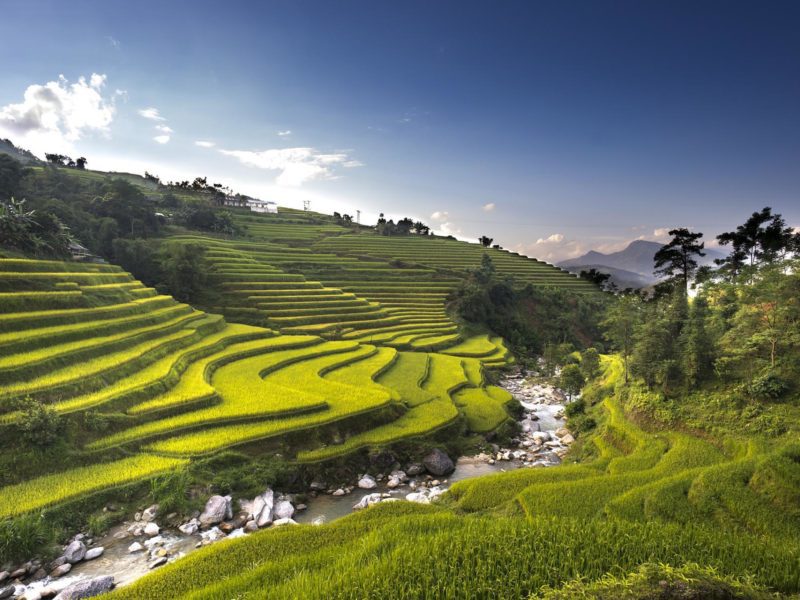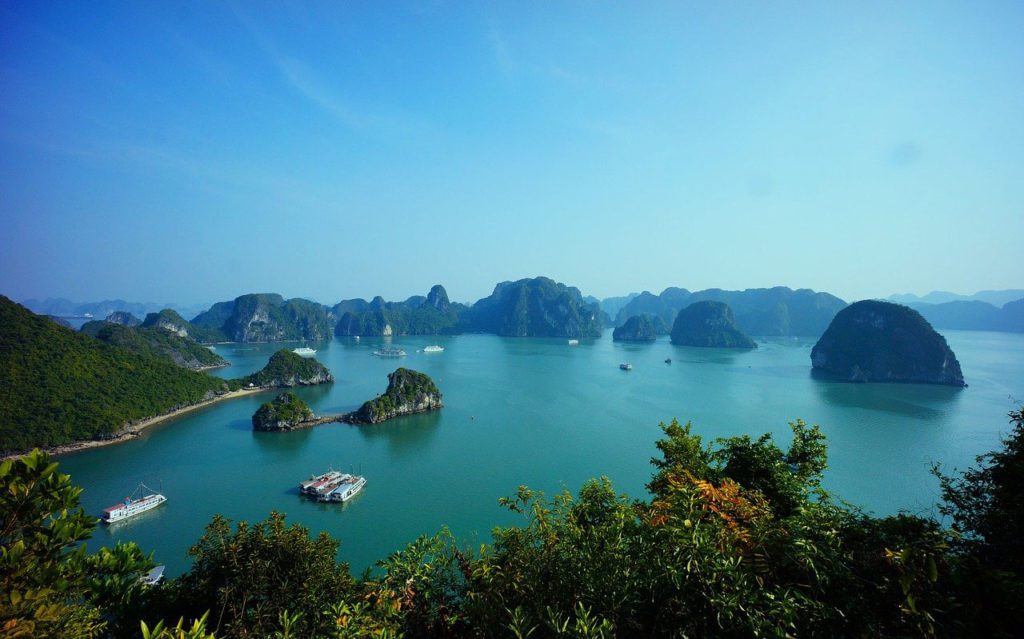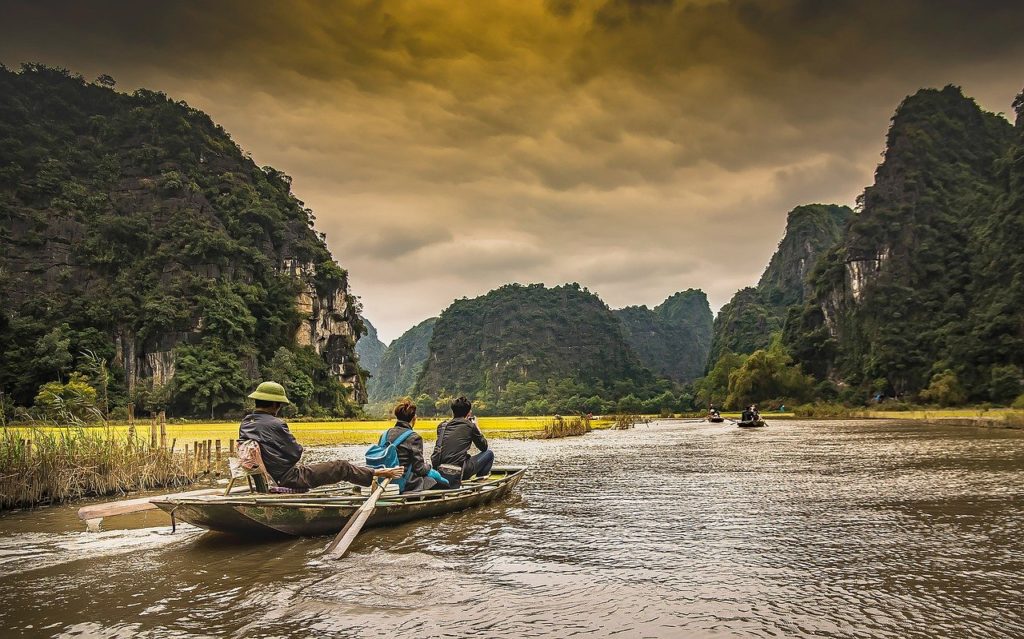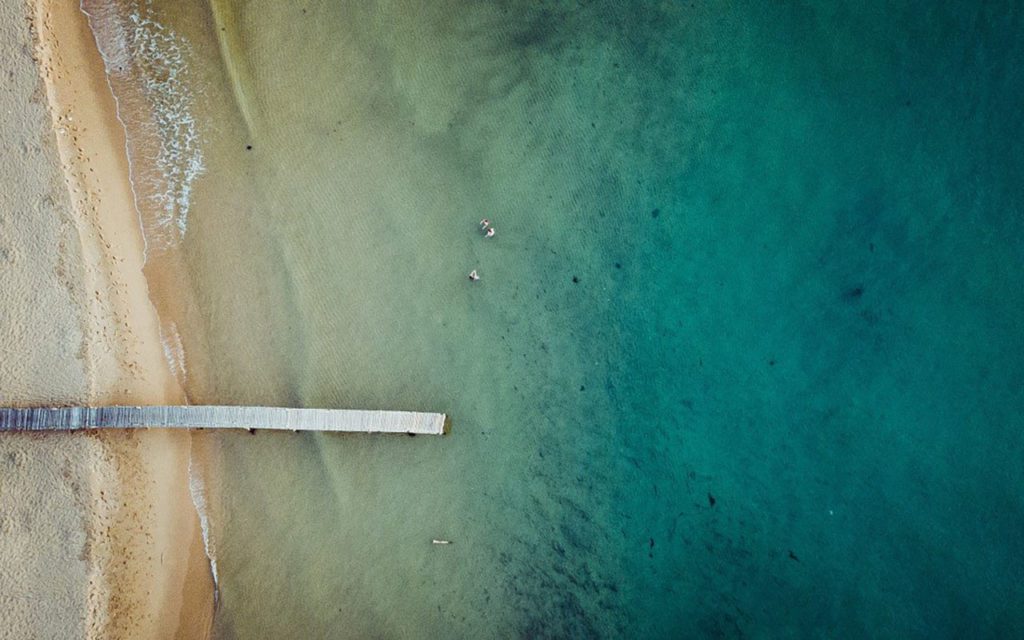For an unforgettable first discovery of Vietnam
Embark on a journey to explore the must-visit destinations that make Vietnam famous through tours spanning from the North to the South of the country.
It’s ideal for a first discovery of Vietnam.
All our tours are private, designed for those who want to discover Vietnam in a privileged way, with French-speaking guides who can lovingly explain the customs and traditions of their country.
Discover our travel ideas below and contact us to customize them!
Be inspired by our tours
Why travelling in Vietnam ?
If you’ve never been to Vietnam, you might be considering other destinations like Thailand or Cambodia. Below, we’ll give you our 5 good reasons to come visit us in Vietnam.
Beauty and diversity of landscapes
Vietnam is a country stretching over 2,000 kilometers with incredibly diverse landscapes. There are numerous thematic trips available (authentic, cultural, beach, etc.) due to the variety of activities.
For instance, if you prefer authenticity and trekking, you can go hiking in Northern Vietnam and climb mountains like Mount Fansipan, which rises to 3,143 meters. You can also admire the stunning terraced rice fields during homestay immersion experiences.
Are you a fan of sunshine and coconut trees? Vietnam boasts a very long and beautiful coastline, and while its beaches may be less famous than those in Thailand, they are well worth a visit! In the spring, summer, and autumn, you can also swim in Halong Bay.
A Multi-cultural country
While Vietnam may initially appear relatively uniform (with a predominant Kinh ethnic group and a widely spoken language), the country is, in fact, very diverse. There are currently 54 ethnicities living on Vietnamese soil. A visit to the Museum of Ethnology in Hanoi will teach you a lot about their histories and customs. This will prepare you to explore Northern Vietnam with your guide and meet local populations.
We strongly recommend spending at least one night with a host family from a minority ethnic group. This will give you an inside look at their homes and provide you with a good understanding of how people live. This is what we emphasize in each of our tailor-made tours.
A Warm Welcome
All the ethnicities in Vietnam have a culture of hospitality. People will take pride in inviting you for tea or even to share a meal with them. After many years of war and political isolation, since the 1990s, the Vietnamese have been seizing the opportunity to open up to the world.
In addition to a culture of hospitality, the Vietnamese maintain a culture of sharing. This is evident, especially during meal times when all the dishes are placed on the table (or mat) at the same time. But it also extends to daily life, where they won’t hesitate to share fruits or food with you, even if you don’t know each other. So, go with peace of mind; you will be very well received in Vietnam!
Vietnamese cuisine, a delight
Vietnamese cuisine is known to be balanced and healthy, and this reputation is well-deserved!
Fresh vegetables adorn each dish, and sauces are sparing, as are chili peppers. Don’t be afraid to eat at street “boui-boui” eateries; that’s where you’ll find the best food! These are dishes prepared in a traditional and family manner, not industrial.
The Vietnamese population is also slender for another reason: their way of eating and sharing a meal. It is proven that using chopsticks, eating various dishes, and sharing them significantly slows down the absorption rate and promotes better digestion!
Unbeatable value for money
Vietnam is also attractive due to the low cost of living on-site. Your international flight will likely be your biggest expense!
In Vietnam, it’s possible to dine at street restaurants (of very good quality, as we’ve just seen) for 2 or 3 euros… You’ll also have access to quality hotels (3 stars) at hostel prices in France! And if you’re looking for beaches, it was shown in 2017 (source: Travel Bird) that the price of a day at the beach in central and southern Vietnam is simply the cheapest in the world! You’ll only need to spend an average of about 2 euros for all the essentials (drinks, sunscreen, etc. – excluding hotel) to enjoy the beach.
The 10 must-visit tourist sites in Vietnam
If you’re visiting Vietnam for the first time, you’ll naturally want to see the most beautiful tourist sites that make the country famous. Here’s a selection of 10 sites that we recommend for an initial exploration of the country.
Halong bay
If there were only one thing to see in Vietnam, it would undoubtedly be Halong Bay!
Located in the Gulf of Tonkin, 170 kilometers from Hanoi, the Bay offers a magnificent natural landscape. What sets it apart? It’s the multitude of rocky peaks, 1,600 in number, rising majestically from the water. Over time, many of these peaks have been eroded to create caves, some of which open up to beautiful inner lakes. Halong Bay is, of course, the most famous site in Vietnam, classified as a UNESCO World Heritage Site.
To experience this in the best way, we recommend taking a cruise on a traditional junk boat in Lan Ha Bay. This part of Halong Bay is much quieter than the main bay, which now accommodates too many boats.
Ninh Binh, Halong bay on land
Contrary to what its name (“Inland Halong Bay”) might suggest, Ninh Binh is not located near Halong Bay. In fact, it takes about 3 hours to travel from Halong City to Ninh Binh. The recent highway has significantly improved the road connection.
“You will be happy to see the karst formations that you left in Halong Bay here. The rocks don’t emerge from the sea but from the land. It’s just as impressive and relaxing! Several sites are worth exploring, such as Trang An (a UNESCO World Heritage site), Tam Coc (with a river bordered by rice fields), Van Long, and Thung Nham (two less-visited sites that also have their charm).
You can also visit the former capital of Vietnam, Hoa Lu, or explore the Bai Dinh Buddhist complex, go cycling in the surrounding countryside, and stop at several very ancient pagodas.”
Sapa and its surroundings
Sapa is a town located in Lao Cai Province, near the Chinese border in northern Vietnam. It was first developed by the French colonial authorities in the early 20th century to provide a retreat for French officials stationed in Vietnam during the sweltering heat of the tropical summer. It is the home of various mountain ethnicities, notably the Hmong, and over time, the Vietnamese (Kinh) population has settled in the area.
Lao Cai Province boasts the highest peaks in Vietnam, including Mount Fansipan, which rises to 3,143 meters. Visiting Sapa and hiking in the surrounding areas means getting to know the indigenous peoples, especially the Hmong, who have inhabited these regions for many years. It’s also an opportunity to marvel at the beauty of the landscapes, particularly the terraced rice fields sculpted by the men and women of the mountains.
The town of Sapa itself has very little charm, increasingly disfigured by haphazard construction. However, the landscapes and local life around Sapa are well worth the visit. On foot, you can explore villages such as Lao Chai, Ta Van, and Giang Ta Chai. If you rent a car or motorcycles, we recommend heading towards Y Ty, a small village near the Chinese border. The landscapes along the road are stunning, and you’ll encounter few tourists.
Ban Gioc waterfall
Ban Gioc is a magnificent waterfall that serves as the border between China and Vietnam. This exceptional natural site is located on the Vietnamese side in the province of Cao Bang, in the extreme east of the country. This waterfall is the widest in Vietnam, spanning an impressive 300 meters! The water from the Quay Son River suddenly drops from a height of over 30 meters. It is certainly one of the most impressive natural tourist sites in Vietnam. Once on site, you can take a small bamboo boat (50,000 VND) that will take you as close to the waterfall as possible – be prepared to get wet!
The waterfall is not the only interesting tourist site. A few kilometers before the waterfall are the Nguom Ngao Caves, which are impressive and well-maintained.
Caves in Phong Nha Ke Bang
Phong Nha Ke Bang National Park is still not on the typical itineraries, and yet… it is home to some of the most beautiful and largest caves in the world, nothing less! It is very well-developed today, and local authorities aim to make it a top destination for adventure tourism in Asia!
There are two ways to visit the national park:
# The classic way: You will stay in a hotel within the national park and visit the most accessible caves, such as Paradise Cave and Phong Nha Cave, which can be explored by small boat. Accessible doesn’t mean they lack interest! You will be amazed by the beauty of nature’s work and the history of Paradise Cave, for example.
# The adventurous way: You have the choice between several excursions that combine trekking and spelunking/canyoning in the caves. If you are in good shape and want to combine sightseeing, discovery, and sports, this choice will be the right one!
Hue and the imperial city
Hue is the main city of Thừa Thiên-Huế Province, located in central Vietnam. It was in Hue that the Nguyen dynasty built its Imperial City in the 19th century. The city flourished with significant artistic and intellectual reputation until the arrival of French troops in the 1880s. The Imperial City was mostly destroyed, and many valuable items such as furniture and manuscripts were stolen or burned. Subsequently, the wars for independence against the French and the Americans further devastated the cultural and historical heritage of Hue…
Fortunately, for several years, a massive restoration effort has been taking place, and it is now possible once again to stroll through an Imperial City that has regained its splendor!
Bana Hills and the Golden bridge
This bridge has gained enormous popularity since its opening in June 2018.
The bridge is part of the Ba Na Hills tourist complex located atop the Truong Son Mountain near Danang. French colonial troops, seeking relief from the summer heat, established a climate station at this location from 1919.
The Sun Group, a company specializing in the creation of amusement parks, decided in the early 2010s to create a site with various attractions. The first was the Ba Na Cable Car (2013), which remains the world’s longest cable car to this day (5,801 meters long, non-stop). The Golden Bridge is the most recent attraction. It connects the cable car’s upper station to various gardens. But it’s mainly its architecture that has gained international attention (drone photos have circled the globe). The chief architect, Mr. Vu Viet Anh, ingeniously designed two giant hands that give the impression of supporting the bridge.
An architectural feat and unparalleled publicity for Vietnam!
Hoi An and the Old City
Hoi An is a small town located in Quảng Nam Province, 30 kilometers from Da Nang.
Formerly a well-known fishing port for silk merchants from the 15th century, Hoi An has been influenced by various cultures, which can be seen in the architecture of its Old Town. This town has been a UNESCO World Heritage site since 1999 and boasts 844 noteworthy buildings. You may not have the time or patience to visit them all! However, several of them are must-see attractions: the Japanese Covered Bridge, built in 1593 to connect the Japanese and Chinese quarters of the town; the Tan Ky House, the oldest in Hoi An and the first to be recognized as a Historical Monument in 1985; and the Phuc Kien Pagoda, which was once the gathering place for the community from the Fujian Province.
In addition to these monuments, taking a stroll in the Old Town, during the day to appreciate the colorful facades, and in the evening to enjoy the lantern lights, is an experience not to be missed!
My Son sanctuary
Located 30 kilometers west of the small town of Hoi An in central Vietnam, the My Son Sanctuary is the primary archaeological site of the Cham civilization, which existed from the 4th to the 13th century.
With cultural and spiritual origins in the Indian subcontinent and Hinduism, the Cham people constructed numerous temples in honor of Hindu deities, including Krishna, Vishnu, and especially Shiva. My Son was the religious heart of this civilization.
By visiting this sanctuary, you’ll explore 10 centuries of history that unfolded along the Vietnamese coast. The site was designated as a UNESCO World Heritage site in 1999.
Cu Chi tunnels
Cu Chi is a remote district located near Ho Chi Minh City, hosting tunnels that served the Viet Minh soldiers during the war against the French and especially the Americans.
These tunnels allowed Vietnamese resistance fighters to hide from American attacks and prepare their assaults. On several occasions, the American military bombarded the Cu Chi region and sent ground troops (called “tunnel rats”) to try to obtain information. They succeeded in 1967 when they discovered the Viet Minh headquarters in Cu Chi. More than 500,000 documents were found there! But that wasn’t enough, and the Cu Chi tunnels still strongly symbolize the ingenuity and sacrifice of Vietnamese soldiers in their fight against the “invader.”
At the end of the war, the Vietnamese Communist Party decided to preserve and develop two tunnel complexes, extending over 120 kilometers. Parts of the tunnels have been reconstructed and adapted to accommodate tourists.

